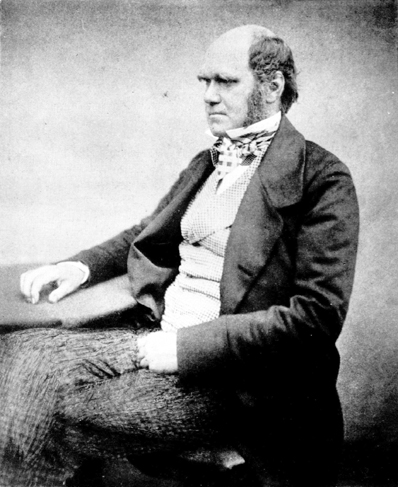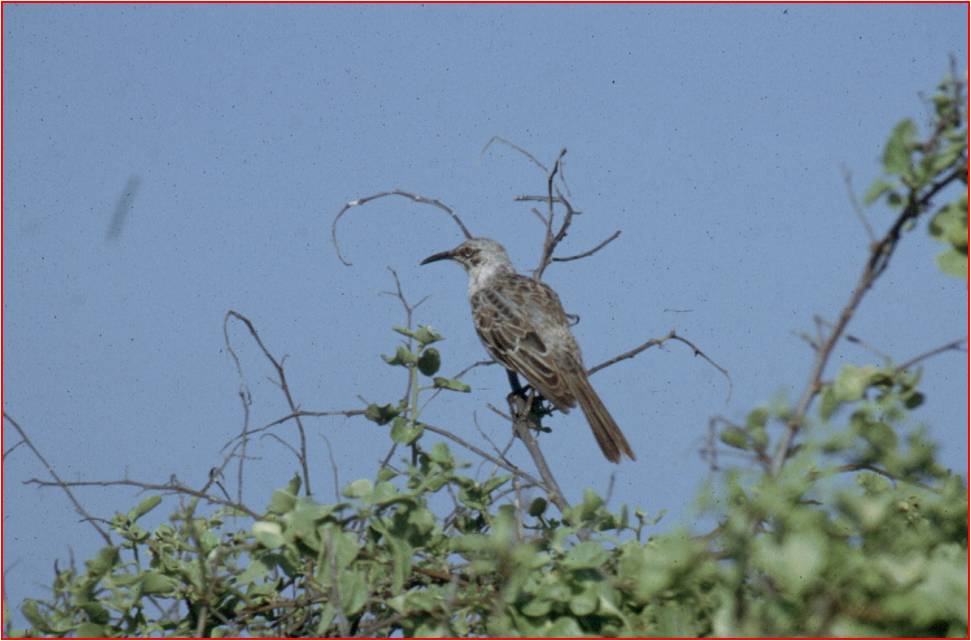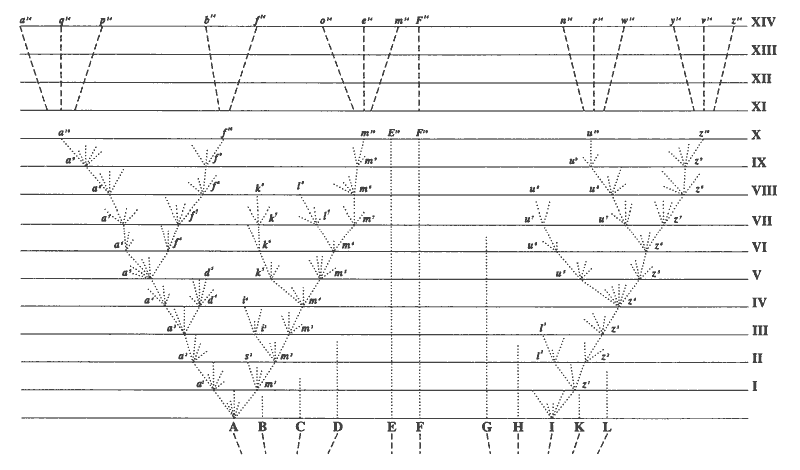 A.
Overview:
A.
Overview:
 A.
Overview:
A.
Overview:1. Geology
2. Paleontology
3. Comparative Anatomy
4. Biogeography
a. Community
convergence
Under similar environmental conditions, we find different
species filling similar ecological niches. Outward 'form' correlates with
ecological niche (role) across entire communities. So, in Australia, marsupials
fill the role of dog-like predator, cat-like predator, burrowing animal, ant-eater,
etc. These same roles are filled by outwardly similar placental mammals in South
America. However, the similarity between a wolf (placental) and a Thylacine
(marsupial - the 'tasmanian wolf') are strictly ANALOGIES. Their underlying
structure shows them to be quite different - a wolf is more similar to a ground
hog (both placentals) in underlying structure than to a thylacine.
 b.
Islands Faunas
b.
Islands Faunas
Islands often have fewer species than a mainland - even a patch of mainland the same size. As such, the patterns and interactions are often simpler to describe and understand. For both Darwin and Alfred Russel Wallace (the other independent author of the theory of evolution by natural selection), the study of islands was critical in to the development of their ideas.
1. Distance correlates with the uniqueness of the inhabitants: the animals on the Fauklands are the same species as on the mainland, but the Galapagos fauna is composed of unique species, found nowhere else:
"The natural history of these islands is eminently curious, and well deserves
attention. Most of the organic productions are aboriginal creations, found nowhere
else; there is even a difference between the inhabitants of the different islands;
yet all show a marked relationship with those of America, though separated from
that continent by an open space of ocean, between 500 and 600 miles in width.
The archipelago is a little world within itself, or rather a satellite attached
to America, whence it has derived a few stray colonists, and has received the
general character of its indigenous productions. Considering the small size
of the islands, we feel the more astonished at the number of their aboriginal
beings, and at their confined range. Seeing every height crowned with its crater,
and the boundaries of most of the lava- streams still distinct, we are led to
believe that within a period geologically recent the unbroken ocean was here
spread out. Hence, both in space and time, we seem to be brought somewhat near
to that great fact -- that mystery of mysteries -- the first appearance of new
beings on this earth." The Voyage of the Beagle - Darwin (1839).
 2. The Galapagos fauna:
2. The Galapagos fauna:
- It was related to american fauna,
yet different: the types of animals are new world animals.... there are iguanas
like the green iguana of Central and South America, but the iguanas are different
species. So, darwin describe it as " a world within itself, or rather,
a satellite of the Americas" .... it was different, but more like the American
fauna than any other...(no chameleons, for instance, which are old world lizards...)
- It was dominated by dispersive forms. This is critical. The communities are dominated by reptiles, birds, and marine mammals. All of these organisms could MIGRATE to the islands from the mainland. (Terrestrial mammals don't migrate as well as terrestrial reptiles over open ocean. Throw a reptile in cold salty water, and: 1) its metabolism slows down (its cold), so 2) its demand for food and water decline; and 3) its scales protect it against water loss... which is why reptiles do well in the desert, too. Throw a mammal in cold salt water, and it's going to have a VERY tought time: 1) the temperature gradient between its warm body and the cold ocean is very large - in order to maintain its high body temperature against this gradient, it's metabolism has to INCREASE (to produce more heat to compensate for the heat lost to the environment). This increased metabolic demand will INCREASE the need for food and water... that's probably in pretty short supply in the open ocean; and 2) water is lost quickly from the skin to the salty ocean once the fur is wet... so, mammals are more likely to starve or die of exposure than reptiles.
- So, the islands are dominated by dispersive forms, and this suggests they came from America. But if they came from America, WHY ARE THEY DIFFERENT SPECIES THAN THOSE IN AMERICA? They must have changed since their arrival.
- There are even differences between
species on different islands. On the 14 species of finches - "Seeing this gradation
and diversity of structure in one small, intimately related group of birds,
one might really fancy that from an original paucity of birds in this archipelago,
one species had been taken and modified for different ends." The Voyage
of the Beagle - Darwin (1839)  VIDEO
VIDEO
- Galapagos Mockingbirds Darwin thought he had one, very variable species. He
sent specimens to John Gould, the premiere ornithologist in England at the time.
On Darwin's return to England, he found out that Gould recognized the mockingbird
specimens as belonging to 4 separate species. This made Darwin consider that
maybe the variation WITHIN a species could be continuous with the variation
BETWEEN species.... maybe varieties within a species could gradually become
so different from one another that they would eventually become different species.
VIDEO
5. Argument For Evolution as a Historical Fact:
Premise 1: Species that are alive today are different from those that have lived previously.
Premise 2: Spontaneous Generation is refuted, so organisms only come from other organisms.
Conclusion 1: Thus, the organisms alive today must have come from those pre-existing, yet different, species.
Conclusion 2: There must have been change through time (evolution).
Conclusion 3: The fossil record, vestigial organs, and homologies are all suggestive of descent from common ancestors.Below, the figure from The Origin of Species that shows Darwin's idea of descent from common ancestors.

So, if species do change over time (evolve), the next question is "How?" How does this change occur?
1. Transitional Observations
 a.
Domesticated animals:
a.
Domesticated animals:
As a result of selective breeding, humans have taken certain species and modified them tremendously. So, from an ancestral population of wolves, we have created chihuahuas and St. Bernards. Now, there were never any Chihuahua sized wolves running around - we created this variability by progressively breeding smaller dogs with one another. Now, we have two groups, Chihuahuas and St. Bernards, that can't easily be bred together. So, we have created separate biological groups, that could be called different species. Darwin was aware of many 'breeds' of pigeons, too. These were called varieties, almost assuredly descended from a common ancestral population of rock doves (left). The KEY to the production of new varieties by humans is that humans only allowed certain organisms to breed. So, only particular traits were passed to the next generation. Darwin wondered if there was a mechanism that could do the SAME thing in nature (only allow certain organisms in a population to breed), and thereby explain the natural changes seen in the fossil record (radiational patterns of multiple species in one strata necessarily coming from fewer species in earlier strata). and implied by island faunas. Just because man does it purposefully, by design and with aforethought, doesn't mean that nature can't do it WITHOUT purpose. We put water in the freezer to PURPOSEFULLY make ice cubes... but water freezes naturally, as well - without a purpose, but with the same NATURAL CAUSE (loss of heat).
 b. Reading Malthus:
b. Reading Malthus:
In 1838, Darwin read a book published in 1798 by Thomas Malthus called Essay on the Principle of Population. Malthus was a british aristocrat who was concerned that the british aristocracy might be overthrown like the French had been 10 years before (1788). He realized that all populations have the capacity to grow exponentially, but that resources are finite. As such, there will eventually be a "struggle for existence" (Darwin's words). Malthus was worried that the british population would continue to grow, and that poverty and famine would lead to revolution.
Darwin read Malthus, and wrote in his autobiography:
“In October 1838,
that is, fifteen months after I had begun my systematic enquiry, I happened
to read for amusement Malthus on Population and being well prepared to appreciate
the struggle for existence which everywhere goes on from long-continued observation
of the habits of animals and plants, it at once struck me that under these circumstances
favourable variations would tend to be preserved, and unfavourable ones to be
destroyed. The result of this would be the formation of new species. Here, then,
I had at last got a theory by which to work; but I was so anxious to avoid prejudice,
that I determined not for some time to write even the briefest sketch of it.
In June 1842 I first allowed myself the satisfaction of writing a very brief
abstract of my theory in pencil in 35 pages; and this was enlarged during the
summer of 1844 into one of 230 pages, which I had fairly copied out and still
possess.” - The Autobiography of Charles Darwin
1809-1882 (Barlow 1958).
- If there are limited resources of food, shelter, and mates, and if organisms in a population vary, then as a consequence of this variability, some will be more likely to gain the resources than others, and will thus be more likely to mate. So, the environment will 'select' which animals in a population will mate (the ones best able to acquire the limiting resources)... and these traits that work to gain resources in this environment will be passed on at high frequency to the next generation.
Study Questions:
1. How did Darwin explain the existence of 'convergent communities"?
2. The Galapagos are dominated by many unique species of reptiles, birds, and marine mammals. What did this non-random assemblage suggest to Darwin about their origin, and how was evolution implied?
3. Why were the mockingbirds so critical to Darwin's ideas about the production of new species?
4. Outline Darwin's argument of the fact of evolution.
5. How did Darwin use the comparative method and observations of 'artificial selection' to produce the theory of 'natural selection'?
6. How were Malthus's observations and conclusion rlevant to the development of Darwin's theory?